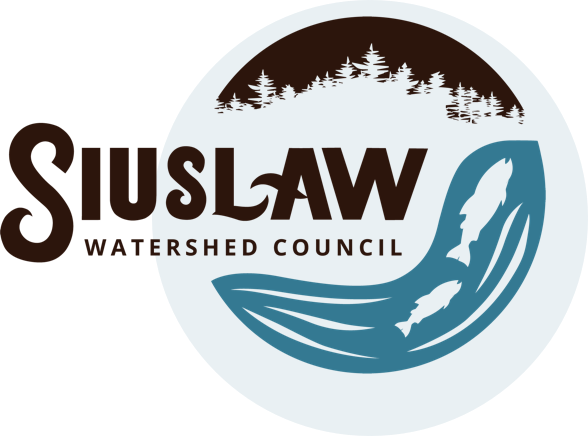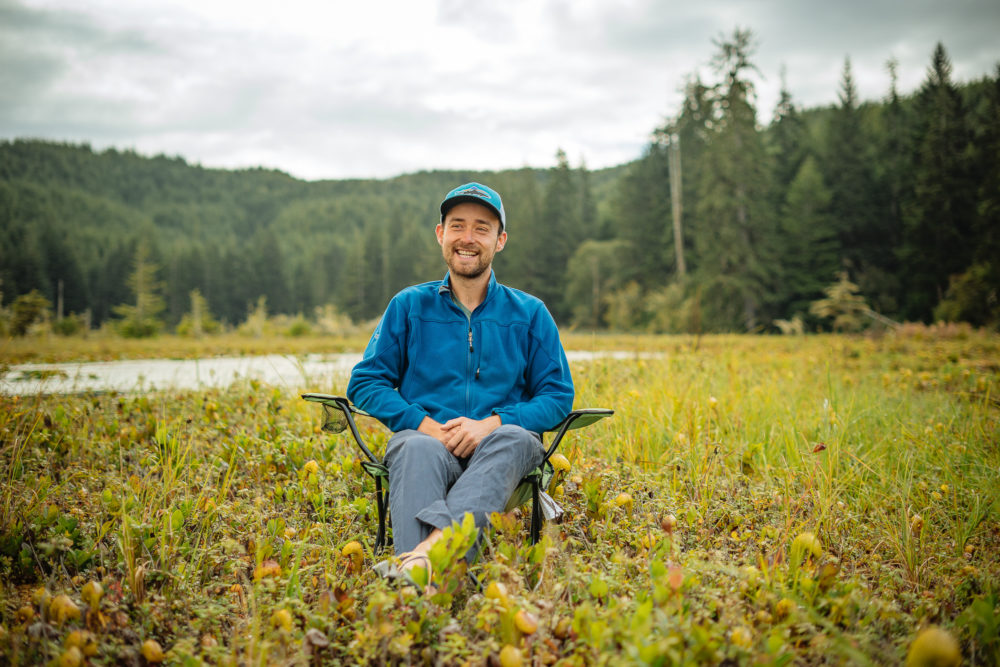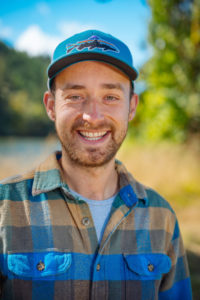
“I had the privilege to lead an amazing team of folks who work tirelessly to restore our river…”
— Eli Tome, SWC executive director
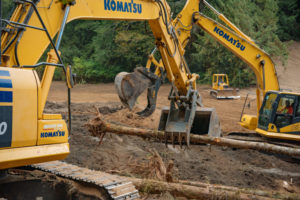
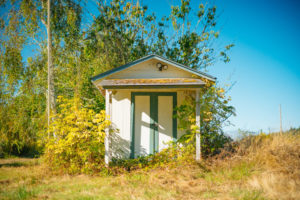
REPRINTED FROM THE SIUSLAW NEWS
by Chantelle Meyer
After three years working in the Siuslaw region, Siuslaw Watershed Council (SWC) Executive Director Eli Tome is voyaging north to work at a land trust in Washington. His final day was last week, but he took time to talk about the Siuslaw, his time here and the stories Siuslaw Watershed Council is ready to share.
“I had the privilege to lead an amazing team of folks who work tirelessly to restore our river, build community and develop the next generation of environmental stewards for our area,” Tome said.
When he joined SWC, the council looked much different than it does now. It had an outdated website, an old logo and people had a hard time connecting to the council’s resources.
Shortly after, Tome began to come up with a plan. Now, siuslaw.org is a well-functioning website full of professional photography, events, resources and more — with new projects planned to be published in the coming months. The website also contains links to the SWC’s film series “Stories of Restoring the Siuslaw,” which debuted in March 2019 at City Lights Cinemas after a rollout on the council’s social media. Those films have now been shown around the world.
“We now have a new logo, too, that is more representative of the watershed and shows the connection between the forest, the fish and the river,” Tome said.
The SWC has accomplished a lot in the past three years. Tome detailed more on the organizational facelift, adding that the watershed council was able to add employees and improve its funding situation. This included raising enough funds to pay a better living wage, giving everyone at the watershed a 10 percent pay increase, adding health insurance and initiating a 401K program.
“Good things happened,” Tome said. “Those boring administrative things that often fall behind for nonprofits, we were able to bring on to make this a livable job and make this a place where someone can build a career and stay on a long time.”
Plus, in just the past two years, SWC spent more than $2 million on restoration work, which supports 15 to 18 local jobs and connects the Siuslaw with contractors.
“It feels like it’s a really exciting time to be working here. The council has a lot of new tools that we didn’t have before,” Tome said. “And we’re a new face in the community. A lot of people have found us over the past couple years, and have started to engage with us more and more about the land.”
One of those tools is the Watershed Exploration Camp each summer. It costs campers $75 for a five-day camp, but ultimately the SWC spends $500 per attendee. “We believe that every child in our area should have the opportunity to go to our camps to learn about all those things,” Tome said. “We offer a scholarship for free if they can’t afford it.”
The watershed also began a new education program in partnership with Ecology in Classrooms and Outdoors (ECO) and Confederated Tribes of the Coos, Lower Umpqua and Siuslaw Indians (CTCLUSI).
A grant from The Gray Family Foundation, located in Portland, Ore., will pro-vide three years of funding for the established education position.
Earlier this year, SWC hired area resident Alysia Downs as the education out-reach coordinator.
Besides the watershed camps, she will be working with the program’s partners to bring traditional knowledge to ecology education in local classrooms and take students on field trips to restoration sites in the field.
“With our education focus, a lot of that is to show local students careers they can have in our community,” Tome said. “It can be hard knowing what folks do in this area, so exposing them to people working in the field, who are working with salmon or conservation, can broaden their horizons of possibilities.”
He added that when he was in kindergarten, he would never have known that watershed councils existed, let alone that he would someday work with one.
Education won’t just focus on youth, either. Downs will also be holding public meetings and leading community members on tours into the region’s wooded areas.
“She’s going to get the public out to see those things, since they’re deep in the woods that people never go to,” Tome said. “It will be a great way to not only broaden people’s career knowledge, but also educate them in how amazing the Siuslaw is and what a unique place this is to be able to work on restoration projects.”
Restoration, ultimately, is a huge focus of SWC.
Tomes and SWC staff tell the story of salmon in the Siuslaw, both its historic highs of 400,000 in the 1800s and minuscule lows of a mere 500 in the 1990s.
Using local tribal knowledge and conversing with landowners, residents and other stakeholders, the watershed council is working with the community to increase native plant growth, protect streams and restore habitat.
“This is what we are doing today to make the Siuslaw better, make sure the next generation will have salmon and have a resilient forest in the face of a changing climate,” Tome said.
A lot of that work is done through grants. In March, the SWC and a group of 10 organizations called the Siuslaw Coho Partnership received a grant agreement of $144,000 to fund partnership capacity.
“The Siuslaw Coho Partnership created this strategic action plan for coho recovery,” Tome said, describing the fish as a key-stone species in restoration efforts. “We’re all working together and pooling resources to restore salmon habitat.
“This grant is going to support the capacity of all our partners to be able to engage in those planning efforts.”
Part of the grant will fund Diversity, Equity and Inclusion (DEI) training, an important aspect of non-profit work. The SWC has done work on this in the past, most recently sending all eight staff members to the Siuslaw Vision and The Ford Family Foundation’s equity training in February.
“We’re going to think how our work affects our community, and if we’re having proportionate effects on different demographics in our community,” Tome said.
Using numbers from the U.S. Census 2020 and other surveys, the council wants to see who lives in the Siuslaw and how those community members get their information. Then, the SWC will work to reach more people and engage with them in accessible ways.
Tome has a strong back-ground in accessibility, writing his master’s thesis at the University of Oregon on environmental justice and river restoration.
He used geospatial statistics to show that groups tend to invest restoration dollars more heavily in white, affluent communities than they do in less affluent and more marginalized communities.
“We’re thinking about that with our work. Everyone needs clean water and good habitat,” Tome said. “DEI is going to be huge for our organization and for our partnership. … It’s newer and more novel to be considering who our work is benefiting and if we are serving our community properly. It’s exciting that that work is happening and we have some buy-in to that.”
The Siuslaw Coho Partnership is also applying to larger grants in order to access more resources to connect with marginalized communities.
“We’re making sure that we’re working with our tribal partners to have a voice in restoration, and we’re learning from their traditional ecological knowledge. They’ve been around for thousands of years managing and stewarding our lands. They have the knowledge of the forest and the rivers that we’ll never have. That’s a very important part of our work,” Tome said.
He acknowledged that there are different ways people experience marginalization, referencing age, ethnicity, poverty and even aspects of rural life.
“There are plenty of folks in the woods here that don’t have internet, or don’t have the access to information that a lot of other folks have,” Tome said. “DEI is about making sure those people are included.”
There are resources avail-able, Tome said, such as the Natural Resource Conservation Service, which has conservation rental pro-grams which pay rental money for preserving riparian buffers on properties within the watershed.
“These people also care about fishing, or do subsistence living. How could we be helping with that?” Tome asked. “If we can’t reach those people, or we aren’t reaching those people, then they don’t know about it. How do we reach people we’re not, bring them into the fold and involve them in restoration and conservation work?”
A highly visible restoration is now underway at Waite Ranch near Cushman. This 216-acre project has been in design stages since 2011 and is a partnership between SWC, McKenzie River Trust, which owns the property, and the Confederated Tribes.
“That’s a really cool project that the tribes have gotten more involved in the last couple years,” Tome said. We’re talking about access for tribal elders at the property — to make sure they can access traditional foods and materials.”
According to the McKenzie River Trust, the project seeks to restore the property to a complex estuary ecosystem that will benefit native fish like coastal coho and Chinook salmon and steelhead, and many other sensitive birds and wildlife species.
The tribes have been consulted on where and what to plant as the ranch is converted back to more natural uses. Plus, CTCLUSI Water Protection Specialist Ashley Russel is interested in leading ethnobotany tours on the property. According to Tome, she often brings traditional tools for harvesting and baskets created to catch lamprey.
“Waite Ranch has been an awesome project to work on, and McKenzie River Trust just acquired another property across the river from there, so we’re looking at a restoration feasibility study out there,” Tome said.
McKenzie River Trust is the only land trust in the area, working with coastal properties from Reedsport to Yachats. It eventually plans to open a central coast office.
According to Tome, land trusts work with community members to retain good habitat in perpetuity or buy properties for restoration. These properties either remain with the trust or are sold to forest services, public lands or local tribes.
“They are a really key part to the conservation equation,” Tome said. “They have the ability to protect lands that are high-functioning habitat now or purchase land to then restore.”
Each of the watershed council’s partners bring something unique to restoration in the Siuslaw.
“A lot of our work at the council is bringing folks and organizations together to do good work on the ground,” Tome said. “It’s all about connections, and change, and embracing change.”
Change will continue to come to the SWC’s website, this time in the form of unique interactive story maps, which will be published later this year. These include blocks of text, unique photographs, videos from the film project, maps and historic images.
“It’s a really cool product that we’re excited to get out to the community,” Tome said. “People will be able to go through our plans, see why we’re working with coho and find other cool statistics.”
The website also includes the council’s current and future projects: phase five of the Fivemile Bell Restoration Project, culvert replacement with U.S. Forest Service and the Bureau of Land Management and bridge replacement at Cleveland Creek. “It’s a lot of fun stuff,” Tome said.
SWC also received a $5,000 grant from Western Lane Community Foundation to replace tables and chairs in the council’s meeting room. That should allow the space to be better utilized as a community gathering space for groups and nonprofits.
Now, however, SWC is “looking for someone to inherit the watershed council and the great team we have here,” Tome said. “We want someone who will use the tools we have and our amazing partners to continue the growth and public relationships we’ve been working on.”
Tome is moving on to be the director of restoration for a land trust. He will continue to contract with SWC on several projects, including a strategic plan and training for the new executive director.
One of those projects is “Stories of the Siuslaw,” a team-up with Eugene-based photographer Kate Harnedy to capture portraits of regional residents and record people’s recollections.
“We’re looking for people who have been in the area a long time to tell us about the changes they gave seen in their lifetimes,” Tome said. “There have been a ton. … We want to find representatives from the timber industry and people who can talk about how things have changed; representatives from the tribal community to talk about traditional management and steward-ship of the land; and from a fishing perspective, too, of folks who have been fishing on the river for years and how that changed since the 1970s and ‘80s. We’re trying to find those representatives.”
Some of those stories will be shared with an audience, and the project will continue as long as there is interest.
In his last week, Tome sat outside the watershed council’s office on Mapleton School District property, near Sailor Creek, where birds sang and children played in the distance. He talked about his vision of restoration of the Siuslaw and what people can be doing to manage lands to make sure that the water-shed remains resilient. He also talked about his satisfaction of the SWC’s accomplishments.
“What I am probably the most proud of is really get-ting to work more with our tribal partners and learning more about their history and their management and stewardship of these lands,” he said. “Getting to work with them on restoring different processes, and to make habitat better for salmon, pre-serve water quality for people in our area and hear their perspective on all that is so invaluable. It’s a partnership that we’ve built. Getting to work with the CTCLUSI as much as I have has been an amazing experience.”
His second point of pride was the film series about the watershed’s partners.
Working with dozens of partners and funding from National Oceanic and Atmospheric Administration, the council created the films with videographer Brian Kelly and photographers Sean Gutierrez and Morgan Heim. The films were made in the course of one week in September 2018 as a “snap-shot” of the many projects happening concurrently in the watershed.
“The film project really got to tell everyone’s story,” Tome said. “The folks we worked with on that did an amazing job. It showed everybody’s unique life history and how they came to this line of work, and connected the dots between all those different communities. That project was just so cool to work on. I hope those videos continue to get shared and are out there from people to learn about the Siuslaw and how special it is.”
This week, the SWC announced the temporary closure of its office while team members continue to work in the field and from home. Phone messages and emails will continue to be checked. For more information, visit siuslaw.org.
FUNDERS
